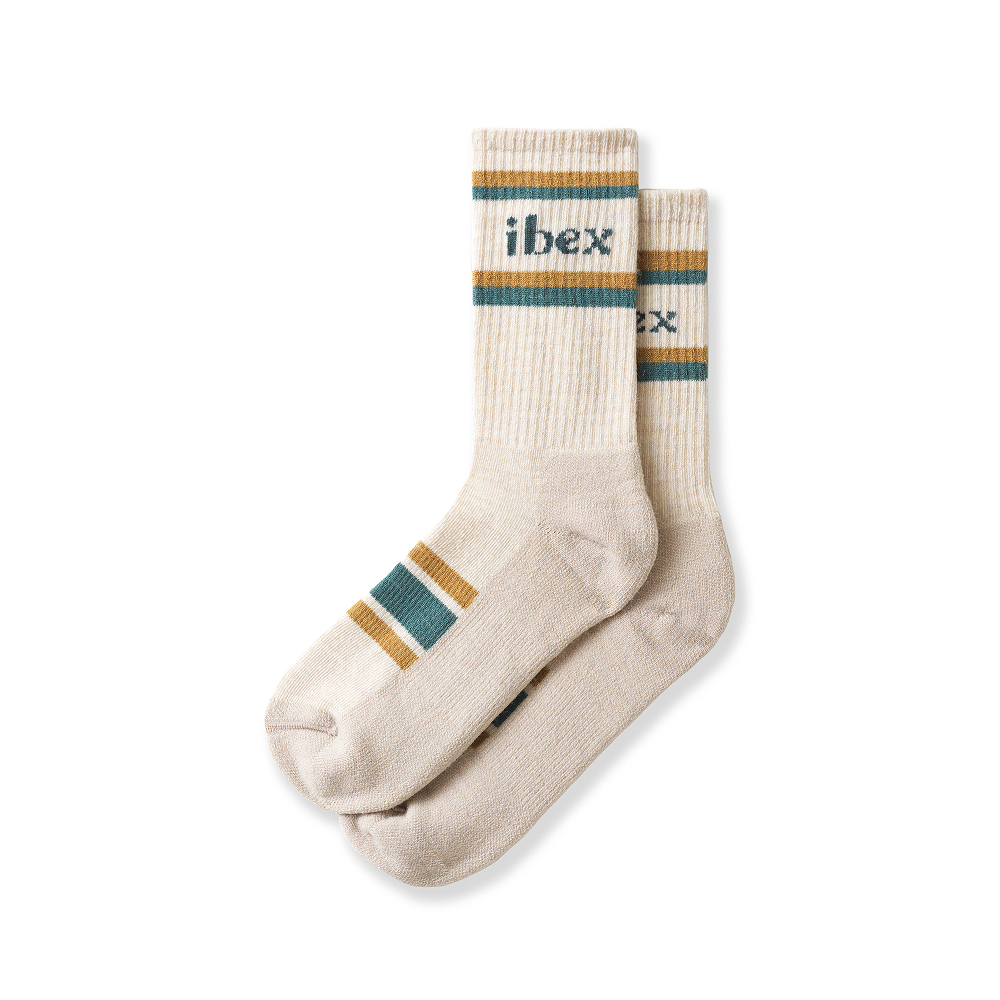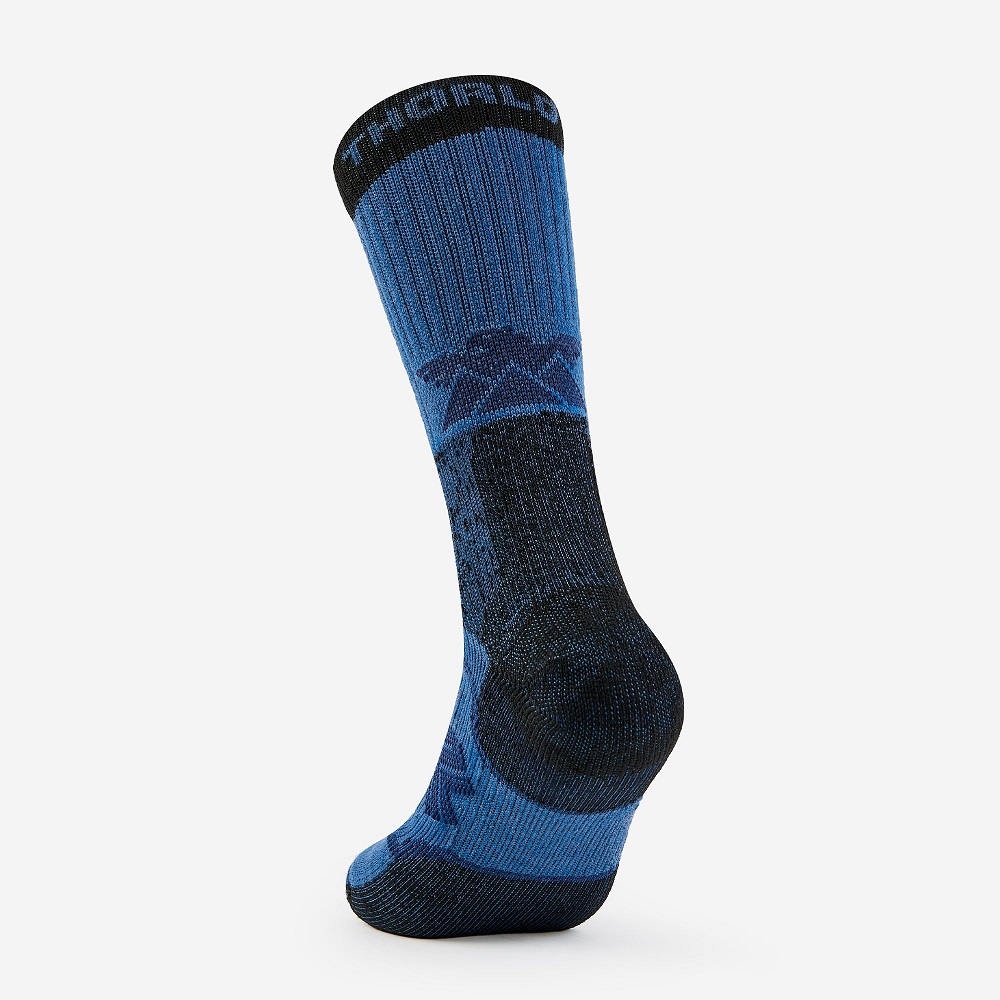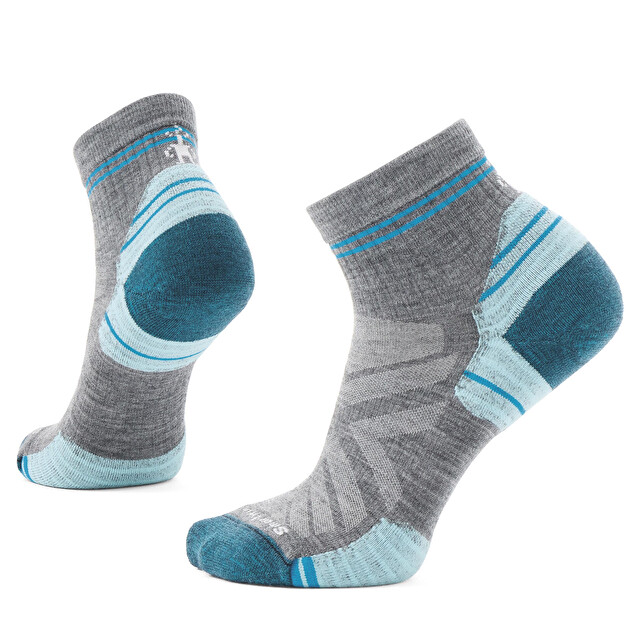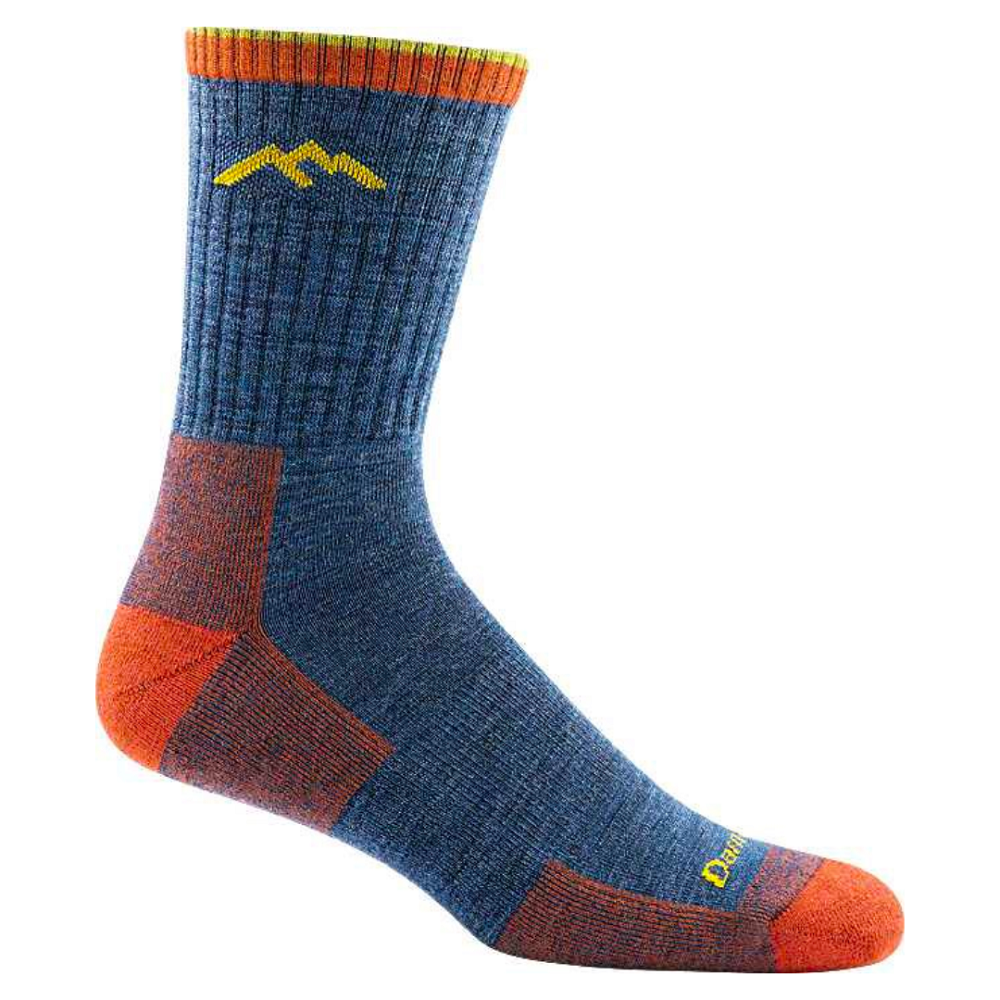The Importance of High-Quality Hiking Socks
As a seasoned adventurer knows, every detail matters on the trail. High-quality hiking socks play a crucial role in your overall comfort and performance while hiking. These are not just any socks; they are a shield for your feet against the rigors of rugged paths. Quality hiking socks provide essential protection from blisters, wick away moisture to keep your feet dry, and offer extra padding to cushion your steps over rocky terrain.
Good hiking socks are like unsung heroes. They help regulate temperature, keeping your feet warm in cold conditions and cool when it’s hot. They support your feet, allowing you to tackle longer treks without undue fatigue. Equally important, high-quality hiking socks reduce friction between your foot and the boot, which directly impacts your comfort level. Such friction can lead to hot spots and blisters, turning an exhilarating hike into a painful ordeal.
Investing in the right pair of hiking socks is investing in the health of your feet. Quality socks may come with a higher price tag, but they often last longer and perform better than regular ones. In the long run, they save money and comfort. In a nutshell, never underestimate the power of a good pair of hiking socks. They could be the difference between a memorable adventure and a lesson in discomfort.

Key Features to Look for in Socks
Finding the right hiking socks involves checking for several key features. Hiking enthusiasts should look for socks that offer a blend of durability, comfort, and protection. Features such as material, cushioning, and fit can make a real difference on the trail. Here’s what to consider when selecting your next pair of hiking socks.
Material Selection for Optimal Performance
The material of hiking socks greatly affects their performance. Look for a blend of synthetic fibers and natural materials. Synthetic materials like polyester and nylon ensure durability and moisture-wicking. Natural fibers such as wool regulate temperature well and provide comfort. Search for socks with a mix that suits the climate you’ll be hiking in.
Cushioning and Support
Good cushioning can absorb shock and protect your feet from rough terrain. Socks with cushioned heels and toes can help prevent blisters. Arch support is also a feature to consider. It helps distribute weight evenly and reduces fatigue. It’s worth checking that the cushioning does not make your shoes too tight.
Fit and Sizing Considerations
Proper fit is key to avoiding discomfort and blisters. Make sure the hiking socks are snug but not too tight. They should stay in place without sliding down. Check size charts and, if possible, try them on with your hiking boots. Remember, socks that are too small can restrict circulation, while too large can cause bunching and friction.
Balancing Breathability and Warmth
When searching for the perfect hiking socks, balancing breathability and warmth is vital. The right pair keeps your feet dry and at a comfortable temperature, regardless of the weather. Here’s how to strike that balance:
Choose the Right Thickness
Thickness impacts a sock’s ability to insulate and breathe. Lighter socks offer more breathability for hot climates. Thicker socks provide more warmth for cooler conditions. Ensure the thickness matches your hiking environment.
Look for Ventilation Features
Some hiking socks have special designs for better airflow. Look for ventilation zones or mesh panels. These features enhance breathability, preventing sweaty feet.
Consider the Weather
Always consider the climate when picking hiking socks. If you’re trekking in cold weather, opt for socks with higher wool content. For warmer hikes, choose models with more synthetic fibers for sweat-wicking.
Balance with Your Boots
Your boots play a role in temperature regulation too. Make sure your hiking socks and boots work together. They should create a system that keeps your feet warm without overheating.
Remember that your comfort is key. When your feet are happy, you can enjoy longer hikes without worry. Keep an eye out for hiking socks that provide a balance of breathability and warmth to suit your trail adventures.

Understanding the Role of Compression in Hiking Socks
Compression in hiking socks is not just a trend; it’s a functional feature. It helps improve blood circulation in your feet. Better blood flow can reduce swelling during long hikes. Socks with slight compression offer another layer of muscular support. They can help stabilize your feet and lower the risk of fatigue.
Benefits of Compression Features
Compression elements in hiking socks bring key benefits. They can help:
- Boost Circulation: Enhanced blood flow aids in quicker recovery and less fatigue.
- Decrease Swelling: Keeping swelling down is vital on prolonged treks.
- Provide Support: Extra support to muscles and joints can prevent strains.
While compression is valuable, it must be right for your body. Too much compression may lead to discomfort. Always choose a level of compression that feels good on your feet.
Finding the Right Compression Level
Locating the ideal compression level is crucial for your hiking experience. Consider these tips:
- Check Compression Ratings: Socks often have a mmHg rating that indicates the level of compression. Choose a rating that suits your needs.
- Consult with Specialists: If uncertain, speak to a medical professional or a seasoned hiker for advice.
- Start Low: If you’re new to compression socks, start with a lower compression level. You can always increase it as per your comfort.
Remember, when it comes to hiking socks, comfort and fit are just as important as function. Ensure any pair of compression hiking socks you choose also aligns with the other features outlined earlier.

Evaluating Durability: What to Check Before Buying
When searching for hiking socks, durability is a key factor. Durable socks withstand tough trails and frequent use. Here’s what to check:
Material Quality
Look at the sock’s material. High-quality materials mean longer-lasting socks. Opt for nylon or polyester blends for strength. Look for merino wool for resilience.
Reinforced Areas
Check for reinforcements. Heels and toes take the most wear. Reinforced areas prevent holes and wear-outs.
Stitching Technique
Inspect the stitching. Flat seams and dense stitching indicate good quality. They signal that the socks can resist tearing.
Weight and Density
Consider the sock weight. Heavier socks often mean sturdier fabric. But balance this with comfort and fit.
Brand Reputation
Research the brand reputation. Established brands are more likely to offer durable products. Read reviews for firsthand durability accounts.
Guarantee or Warranty
A brand’s confidence is shown in its guarantees. Look for socks with a warranty. It offers assurance on your purchase.
Remember, investing in durable hiking socks saves you money over time. They prevent frequent replacements and ensure your trail adventures remain enjoyable. Make durability a priority when choosing your next pair of hiking socks.

Caring for Your Hiking Socks to Ensure Longevity
Caring for hiking socks is crucial for their longevity. Here are simple yet effective ways to maintain them:
Wash with Care
Always follow the washing instructions on the sock label. Use gentle soap and avoid bleach or fabric softeners, as they can damage fibers. Wash with similar colors and turn the socks inside out for a thorough clean.
Dry Properly
Air dry your hiking socks if possible. It preserves elasticity and prevents shrinking. If using a dryer, opt for a low heat setting. Avoid high heat as it can weaken the fabric over time.
Store Correctly
Storing socks properly keeps them in shape. Lay them flat in your drawer or roll them without stretching. Do not hang them as it may distort their fit.
Avoid Harsh Treatment
Be gentle when putting on or taking off your hiking socks. Avoid pulling at the cuffs with force, this can stretch them out.
Repair Small Damages
Small holes or tears? Repair them early to prevent them from getting bigger. Use a needle and thread for a discreet fix.
By following these care tips, you can expect your hiking socks to support your trail adventures for many hikes to come. Regular maintenance is key to extending the life of any high-quality hiking gear, especially something as essential as your socks.
Top Recommendations for Hiking Socks Brands
When it comes to choosing hiking socks, the brand can make a big difference. Quality brands use advanced technologies and materials to ensure comfort and durability. Here are some top brands for you to consider:
Smartwool
Renowned for their merino wool socks, Smartwool offers superb temperature regulation and comfort. Their socks come with varying levels of cushioning and can suit different hiking conditions.
Darn Tough
This brand boasts a lifetime guarantee, which speaks to the durability of their socks. They offer a variety of styles with high-density knitting, making them a great investment for serious hikers.
Wigwam
Wigwam has been making socks for over a century. They combine synthetic and natural fibers for a balance of breathability and warmth. They also focus on foot health with their patented technologies.
Icebreaker
Icebreaker is another brand that utilizes merino wool for its natural thermal regulation properties. Their hiking socks are designed with strategic support zones to enhance fit and comfort.
Thorlos
Thorlos creates their socks with clinically-tested padding to reduce blisters and foot pain. This brand is ideal for those who prioritize cushioning and support on rough trails.
When you pick any of these brands, you’re investing in your foot health and hiking enjoyment. Remember to choose the right features for your needs, considering the material, fit, and the specific qualities of the hiking environment.

Adapting to Different Hiking Conditions
Tailoring Your Sock Selection
When selecting hiking socks, it’s essential to consider the specific conditions of the trails you’ll be navigating. Different terrains, climates, and seasons can affect your choice of socks. For instance, if you’re planning a summer hike in a warmer climate, lightweight socks with excellent moisture-wicking capabilities are paramount. These socks will help keep your feet dry and cool, contributing to a more comfortable hiking experience. Look for options made with thin yet durable materials that allow for breathability without sacrificing strength.
In contrast, if you’re embarking on a winter hike, you should opt for thicker socks made from merino wool. Wool is known for its insulating properties, making it ideal for colder temperatures. It helps retain warmth while still managing moisture, ensuring that your feet remain comfortable even in frigid conditions. As you adapt your sock selection based on the specifics of your hiking trip, you can effectively prepare for varying environmental factors and enhance your overall comfort.
Year-Round Preparedness
By investing in a range of hiking socks designed for different conditions, you can ensure year-round preparedness. For example, having a selection of socks can help you transition from summer day hikes to winter excursions seamlessly. Choose lightweight, cushioned socks for day hikes in the summer, while reserving thicker, insulating options for more extended winter adventures. This proactive approach can help you avoid common foot problems that arise due to mismatched gear.
Understanding Sock Compression
Sock compression is another factor to consider when selecting durable hiking socks. Compression socks can provide additional support to the feet and lower legs, promoting better circulation during long hikes. This feature can be particularly beneficial for those prone to swelling or fatigue. Many brands now offer hiking socks with varying levels of compression, catering to different hiking styles. If you frequently hike long distances, investing in compression socks can improve your overall stamina and comfort on the trail.
Embrace the Trail with Confidence
In conclusion, selecting the right durable hiking socks can significantly impact your comfort and performance on the trails. From understanding the material choices to recognizing the importance of cushioning, moisture management, and compression features, each element plays a vital role in enhancing your hiking experience. By tailoring your sock selection to the specific conditions of your hikes and caring for your gear properly, you can enjoy the great outdoors with confidence, knowing your feet are supported and protected.
Ultimately, taking the time to invest in quality hiking socks is an investment in your hiking adventures. By prioritizing comfort, durability, and fit, you will be well-equipped to enjoy the trails. So as you prepare for your next outdoor journey, be sure to include durable hiking socks in your gear list. They will help ensure that your adventures are as enjoyable and pain-free as possible. Happy hiking!
